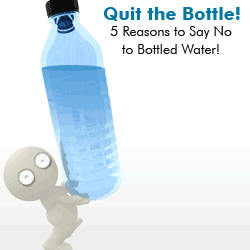
Do you know that about 10 million Americans suffer from osteoporosis, which literally means "porous bones." This disease is characterized by low bone mass and structural deterioration of bone tissue. Thirty-four million suffer from low bone mass but have not been diagnosed with the disease.
There are some risk factors that we cannot change, as gender and race. However, other risk factors are indeed preventable. And, something as simple as water can aid in both preventing and coping with this disease. But just as water can help- it can also harm.
Fluoride-tinged water can increase the risk of bone fractures by 20-40%. It can also contribute to abnormal bone growth. Many municipalities could have fluoride in their water systems, and the only way to remove it is by distillation or with a reverse osmosis water filter. Those who are at risk for osteoporosis should invest in a good quality filter to make sure fluoride is removed. Those with the disease should do the same because of the fracture risk.
Calcium-- or lack thereof-- is the first and foremost nutrient associated with osteoporosis. This element is essential in building and maintaining bone and bone tissue. While milk and supplements are the primary sources for this, there is also calcium-rich mineral water available.
Aqua therapy is also a great way to stay in shape and help relieve the pain involved with osteoporosis. Since exercising is crucial to health and much exercise can be a risk factor in falling and breaking a fragile bone, those with osteoporosis are caught in a Catch-22. So, water activities are an alternative. In the water, exercising can build muscle and also help reduce pain, improve balance, increase range of motion and increase circulation. (After being in a pool for a while, there are some other helpful hints for uses of water: see related article.)
It is also smart to avoid smoking, caffeine, and alcohol. So, replacing those beverages with water- a much better alternative will give many other health benefits.



